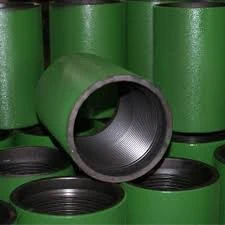- Afrikaans
- Albanian
- Amharic
- Arabic
- Armenian
- Azerbaijani
- Basque
- Belarusian
- Bengali
- Bosnian
- Bulgarian
- Catalan
- Cebuano
- Corsican
- Croatian
- Czech
- Danish
- Dutch
- English
- Esperanto
- Estonian
- Finnish
- French
- Frisian
- Galician
- Georgian
- German
- Greek
- Gujarati
- Haitian Creole
- hausa
- hawaiian
- Hebrew
- Hindi
- Miao
- Hungarian
- Icelandic
- igbo
- Indonesian
- irish
- Italian
- Japanese
- Javanese
- Kannada
- kazakh
- Khmer
- Rwandese
- Korean
- Kurdish
- Kyrgyz
- Lao
- Latin
- Latvian
- Lithuanian
- Luxembourgish
- Macedonian
- Malgashi
- Malay
- Malayalam
- Maltese
- Maori
- Marathi
- Mongolian
- Myanmar
- Nepali
- Norwegian
- Norwegian
- Occitan
- Pashto
- Persian
- Polish
- Portuguese
- Punjabi
- Romanian
- Russian
- Samoan
- Scottish Gaelic
- Serbian
- Sesotho
- Shona
- Sindhi
- Sinhala
- Slovak
- Slovenian
- Somali
- Spanish
- Sundanese
- Swahili
- Swedish
- Tagalog
- Tajik
- Tamil
- Tatar
- Telugu
- Thai
- Turkish
- Turkmen
- Ukrainian
- Urdu
- Uighur
- Uzbek
- Vietnamese
- Welsh
- Bantu
- Yiddish
- Yoruba
- Zulu
Optimizing PUP Joint Drilling Techniques for Enhanced Performance and Efficiency
The Evolution of Pup Joint Drilling in Oil and Gas Industry
Pup joint drilling represents a crucial aspect of operations in the oil and gas industry, particularly in enhancing wellbore integrity and optimizing the drilling process. This topic takes center stage in discussions surrounding advancements in drilling technologies and techniques, reflecting the industry's ongoing commitment to efficiency and safety.
A pup joint is a short length of pipe used to connect different sections of the drilling string. Typically measuring between 2 to 6 feet in length, it serves as an essential tool for managing changes in wellbore stability and drilling parameters. The versatility of pup joints allows them to fill spacing gaps between various components, making them indispensable in ensuring that the drilling assembly operates smoothly.
The significance of pup joints lies in their role in maintaining optimal buoyancy conditions. When drilling deep into the earth's crust, well control is paramount, as it minimizes the risks of blowouts and fluid influx. By adjusting the length of the drilling string with pup joints, operators can fine-tune the weight and balance of the drilling assembly, consequently enhancing control over the borehole environment. This adaptability is vital when navigating through different geological formations, each presenting unique challenges.
pup joint drilling

Moreover, the use of pup joints contributes to the efficiency of drilling operations. By facilitating quick adjustments to the drilling string, operators are able to save time and reduce costs associated with drilling delays. Traditional methods often involved larger, less flexible lengths of pipe, which could lead to increased downtime during adjustments. With pup joints, crews can swiftly make necessary modifications, ultimately leading to improved drilling rates and enhanced productivity.
In recent years, technological advancements have significantly impacted the design and materials used in pup joint manufacturing. Modern pup joints are often crafted from high-strength steel alloys, offering enhanced durability and resistance to wear and tear. Additionally, advancements in manufacturing processes have ensured that these components meet stringent quality standards, thereby elevating their reliability in demanding drilling environments.
Furthermore, the growing emphasis on sustainable practices has led to innovations in pup joint drilling
. Operators are increasingly seeking ways to minimize their environmental footprint, prompting the development of eco-friendly materials and processes. This shift not only aligns with regulatory requirements but also resonates with stakeholders who prioritize sustainability in their operations.In conclusion, pup joint drilling serves as a testament to the evolution of the oil and gas industry. By enhancing wellbore integrity, optimizing drilling efficiency, and incorporating sustainable practices, pup joints have solidified their role as indispensable components in modern drilling operations. As the industry continues to face new challenges and pressures, the importance of these small yet mighty tools will only grow, driving further innovations in drilling technology. Through ongoing research and development, the future of pup joint drilling promises to unveil even greater efficiencies and advancements, setting new standards for operational excellence.
-
Tubing Pup Joints: Essential Components for Oil and Gas OperationsNewsJul.10,2025
-
Pup Joints: Essential Components for Reliable Drilling OperationsNewsJul.10,2025
-
Pipe Couplings: Connecting Your World EfficientlyNewsJul.10,2025
-
Mastering Oilfield Operations with Quality Tubing and CasingNewsJul.10,2025
-
High-Quality Casing Couplings for Every NeedNewsJul.10,2025
-
Boost Your Drilling Efficiency with Premium Crossover Tools & Seating NipplesNewsJul.10,2025







